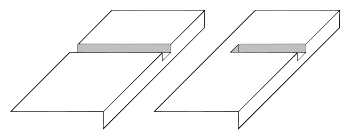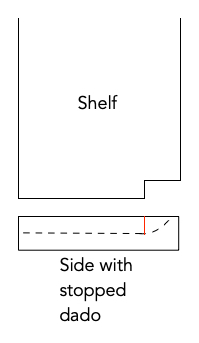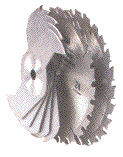Dados 101
A dado is a slot or trench cut into the surface across the grain that when viewed in cross section it has three sides, it is differentiated from a groove which is cut with the grain. Common uses are in the construction of permanent shelving units such as bookcases. If a dado may runs through the entire width of a board it is refered to as a "through dado", if it only runs part way it is refered to as a "stopped dado".
Stopped dados are used when the strength of a dado is required as in the case of a shelf but the mechanics of the joint need to be hidden. Most stopped dados will end in a curved profile, either when cut with a blade or router bit, this can be hidden by cutting a notch in the shelf board.
When a dado is enclosed on both ends it is referred to as an "enclosed dado" or in most cases a "mortise". Cutting DadosDados may be cut with a special blade on a power saw, with a router using a straight bit or by using hand tools. There are two types of dado blades to be used on a saw, stacking and wobbly. The stacking style has two outside blades similar to ordinary saw blades and different width chippers that go between them that are arranged to determine the width of the cut. Wobbly blades are made with an adjustable hub that angles the blade to make the various widths of cuts. The cuts is usually much cleaner with the stacked type of blade.
A radial arm saw is one of the preferred ways to cut dados as the blade is above the work so you can see what you are doing. Cutting dados with a router is usually done using the router freehand with a guide, plans for one type are here. Dados are cut by hand first by marking them out, using a saw to cut the sides and a chisel to clean out the center. Dados are typically cut to a depth of 1/3 the width of the side material when making shelves. |
|
Back to Home Page




